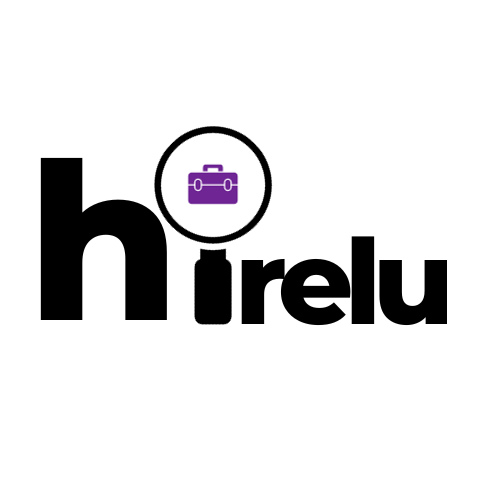A resume is a document that provides a summary of an individual’s education, work experience, skills, and achievements. It is typically used when applying for a job or internship and serves as a way for employers to quickly assess whether a candidate is a good fit for a position. The purpose of a resume is to showcase your qualifications and convince employers that you are the best candidate for the job.
Key Takeaways
- A well-written resume is crucial for job seekers to stand out in a competitive job market.
- Understanding the basics of resume writing, such as formatting and content, is essential for creating an effective resume.
- Identifying the target audience and tailoring the resume to their needs and preferences can increase the chances of getting hired.
- Consider using a resume writing service if you need help crafting a professional and polished resume.
- To avoid common mistakes and create a tailored resume, follow a step-by-step guide and utilize tips for beginners.
Importance of a Well-Written Resume
Having a well-written resume is crucial in today’s competitive job market. With hundreds of applicants vying for the same position, employers often spend just a few seconds scanning each resume before deciding whether to move forward with a candidate. A well-written resume can make you stand out from the crowd and increase your chances of getting an interview.
A good resume can help you stand out by highlighting your relevant skills and experiences. It allows you to showcase your accomplishments and demonstrate how you can contribute to the company’s success. A well-written resume also shows that you have taken the time and effort to present yourself in the best possible light, which can leave a positive impression on employers.
Understanding the Basics of Resume Writing
There are different types of resumes, including chronological, functional, and combination formats. A chronological resume lists your work experience in reverse chronological order, starting with your most recent job. A functional resume focuses on your skills and abilities rather than your work history. A combination resume combines elements of both chronological and functional formats.
The sections of a resume typically include a header, summary statement, work experience, education, skills, and references. The header includes your name, contact information, and sometimes a professional title or objective statement. The summary statement is a brief overview of your qualifications and what you can bring to the table. The work experience section lists your previous jobs, including job titles, dates of employment, and key responsibilities or achievements. The education section includes your educational background, such as degrees earned and institutions attended. The skills section highlights your relevant skills and abilities. Finally, the references section includes the contact information of individuals who can vouch for your qualifications.
Formatting and layout are also important aspects of resume writing. A well-formatted resume is easy to read and visually appealing. Use a clean and professional font, such as Arial or Times New Roman, and make sure to use consistent formatting throughout the document. Use bullet points to organize information and make it easier for employers to scan. Be mindful of the length of your resume – it should typically be no longer than two pages.
Identifying the Target Audience
| Metrics | Description |
|---|---|
| Demographics | Age, gender, income, education level, occupation, etc. |
| Psychographics | Personality, values, interests, attitudes, lifestyle, etc. |
| Geographics | Location, region, climate, urban/rural, etc. |
| Behavioral | Buying habits, product usage, brand loyalty, etc. |
| Technographics | Technology usage, social media presence, online behavior, etc. |
When writing a resume, it is important to consider who will be reading it. The target audience for your resume is typically the hiring manager or recruiter who will be reviewing applications for the position you are applying for. They are looking for candidates who meet the qualifications and requirements outlined in the job description.
To tailor your resume to the target audience, carefully review the job description and identify the key skills, experiences, and qualifications that are required or preferred for the position. Make sure to highlight these in your resume and provide specific examples of how you have demonstrated these skills in previous roles. By aligning your resume with what the employer is looking for, you increase your chances of getting noticed and considered for the job.
Resume Writing Service: Should You Consider One?
If you are unsure about how to write a resume or simply don’t have the time or expertise to do so, you may consider using a resume writing service. These services can help you create a professional and polished resume that effectively showcases your qualifications.
There are pros and cons to using a resume writing service. On one hand, a professional writer can provide valuable insights and expertise in crafting a resume that stands out. They can help you highlight your strengths and tailor your resume to specific job opportunities. Additionally, using a resume writing service can save you time and effort, as they will handle the formatting and layout for you.
On the other hand, using a resume writing service can be costly, especially if you are on a tight budget. Additionally, it is important to choose a reputable service that has a track record of success. Some services may use generic templates or provide cookie-cutter resumes that do not effectively showcase your unique qualifications.
If you decide to use a resume writing service, do your research and choose one that has positive reviews and testimonials. Look for services that offer personalized attention and have experience in your industry or field. It is also a good idea to ask for samples of their work to ensure that their writing style and approach align with your needs.
How to Write a Resume: A Step-by-Step Guide

Writing a resume can seem like a daunting task, but with the right approach, it can be manageable. Here is a step-by-step guide to help you write an effective resume:
1. Prepare: Before you start writing your resume, take some time to gather all the necessary information. This includes your contact information, work history, education, skills, and any relevant achievements or certifications. It can be helpful to create a master document where you can keep track of this information.
2. Header and Summary Statement: The header of your resume should include your name, contact information, and sometimes a professional title or objective statement. The summary statement is a brief overview of your qualifications and what you can bring to the table. It should be concise and highlight your most relevant skills and experiences.
3. Work Experience: The work experience section is where you list your previous jobs, starting with the most recent one. Include the job title, dates of employment, company name, and key responsibilities or achievements for each position. Use bullet points to make it easier for employers to scan.
4. Education: The education section includes your educational background, such as degrees earned and institutions attended. Include the name of the institution, degree or certification earned, and dates of attendance.
5. Skills and Achievements: The skills section is where you highlight your relevant skills and abilities. This can include technical skills, soft skills, and any certifications or licenses you have obtained. The achievements section is where you showcase any notable accomplishments or awards.
6. References: The references section includes the contact information of individuals who can vouch for your qualifications. It is generally recommended to include at least two professional references. Make sure to ask for permission before including someone as a reference.
Resume Writing Tips for Beginners
If you are new to resume writing, here are some tips to help you make your resume stand out:
1. Be concise: Keep your resume concise and focused on the most relevant information. Use bullet points to highlight key responsibilities and achievements.
2. Customize for each job: Tailor your resume to each job opportunity by highlighting the skills and experiences that are most relevant to the position. This shows employers that you have taken the time to understand their needs and are a good fit for the role.
3. Use keywords effectively: Many employers use applicant tracking systems (ATS) to scan resumes for specific keywords. Make sure to include relevant keywords from the job description in your resume to increase your chances of getting noticed.
4. Proofread: Before submitting your resume, make sure to proofread it carefully for any spelling or grammatical errors. It can be helpful to have someone else review it as well to catch any mistakes you may have missed.
5. Keep it professional: Use a professional tone and language throughout your resume. Avoid using slang or jargon that may not be familiar to all employers.
Common Resume Writing Mistakes to Avoid
There are several common resume writing mistakes that can hurt your chances of getting an interview. Here are some mistakes to avoid:
1. Spelling and grammatical errors: Spelling and grammatical errors can make you appear careless and unprofessional. Always proofread your resume carefully before submitting it.
2. Including irrelevant information: Make sure to only include information that is relevant to the job you are applying for. Avoid including personal information, such as hobbies or interests, unless they are directly related to the position.
3. Using a generic template: Using a generic resume template can make your resume look unoriginal and generic. Take the time to create a customized resume that showcases your unique qualifications.
4. Focusing on duties instead of achievements: Instead of simply listing your job responsibilities, focus on your achievements and how you have made a positive impact in previous roles. This shows employers that you can deliver results.
5. Lack of consistency: Make sure to use consistent formatting and language throughout your resume. Inconsistencies can make your resume look sloppy and unprofessional.
Tailoring Your Resume to the Job Description
Tailoring your resume to the job description is an important step in the resume writing process. By customizing your resume for each job opportunity, you can increase your chances of getting noticed by employers.
To tailor your resume, carefully review the job description and identify the key skills, experiences, and qualifications that are required or preferred for the position. Make sure to highlight these in your resume and provide specific examples of how you have demonstrated these skills in previous roles.
Additionally, consider using similar language and terminology as used in the job description. This can help your resume pass through applicant tracking systems (ATS) that scan resumes for specific keywords.
Mastering the Art of Resume Writing
In conclusion, writing a well-crafted resume is crucial in today’s competitive job market. A well-written resume can help you stand out from the crowd and increase your chances of getting an interview. By understanding the basics of resume writing, identifying the target audience, and tailoring your resume to each job opportunity, you can create a resume that effectively showcases your qualifications and convinces employers that you are the best candidate for the job.
While resume writing can be challenging, with practice and attention to detail, you can master the art of resume writing. Continuously seek feedback and make improvements to your resume as you gain more experience and skills. Remember to stay focused, concise, and professional throughout the process. With a well-written resume, you can open doors to new opportunities and take the next step in your career.
If you’re looking for expert advice on resume writing, check out this informative article on Hirelu.com. They offer professional resume writing services to help job seekers stand out from the competition. With their team of experienced writers, they can create a customized resume that highlights your skills and accomplishments. Don’t miss out on this opportunity to improve your chances of landing your dream job. Click here to learn more about their resume writing services.





